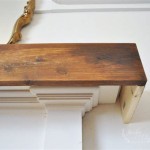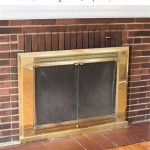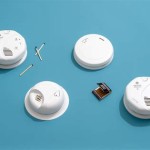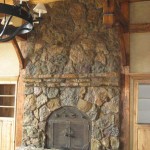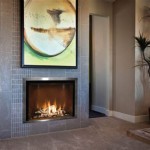How Can I Make My Wood Fireplace More Efficient?
Wood-burning fireplaces offer a cozy ambiance and a source of warmth, but they often come with the drawback of low efficiency. If you're looking to maximize the heat output of your fireplace and minimize fuel consumption, there are several steps you can take to improve its efficiency.
1. Upgrade to a High-Efficiency Fireplace Insert
One of the most effective ways to increase fireplace efficiency is to invest in a high-efficiency fireplace insert. These inserts are designed to maximize heat output and minimize heat loss. They typically feature tightly sealing doors, insulated fireboxes, and secondary combustion systems that burn gases released during the initial fire, resulting in higher heat production and reduced smoke.
Fireplace inserts are typically made of cast iron or steel, providing excellent heat retention and durability. They come in various sizes and styles to suit different fireplace openings. Installing a fireplace insert is a relatively straightforward process that can be done by a qualified professional.
2. Optimize Your Fireplace Design for Efficiency
Even without a high-efficiency insert, you can still improve your fireplace's efficiency through design modifications. This can involve optimizing the fireplace opening, adding a heat shield, and improving the firebox design.
A smaller fireplace opening will contain more heat, leading to more efficient burning and reduced heat loss. Adding a heat shield behind the fireplace can reflect heat back into the room, further enhancing efficiency. A well-designed firebox, with a proper draft and air intake, will ensure complete combustion and reduce smoke emissions.
3. Utilize Proper Wood and Burning Techniques
The type of wood you use and how you burn it significantly impact your fireplace's efficiency. Hardwoods like oak, maple, and cherry burn hotter and longer than softwoods like pine or fir. They also produce less smoke and creosote, which can clog the chimney and reduce efficiency.
Proper burning techniques involve building fires correctly, using adequate kindling, and maintaining a consistent airflow. A well-built fire with a small, hot ember bed will burn more efficiently and produce less smoke. Avoid overloading the fireplace with too much wood, as this can lead to incomplete combustion and wasted fuel.
Regular maintenance is also crucial for efficient burning. Cleaning out the fireplace and chimney regularly will remove creosote buildup and improve airflow. Replacing worn-out grates and firebricks can enhance the fireplace's performance.
By adopting these practices, you can enhance the efficiency of your wood-burning fireplace and enjoy a more comfortable and cost-effective heating solution.

How Can I Make My Traditional Masonry Fireplace More Efficient

How Can I Turn My Fireplace Into A Super Efficient Heat Source

3 Ways I Improved Wood Stove Heating

How To Make Your Fireplace More Energy Efficient Quadra Fire

How To Improve Your Wood Stove S Efficiency

How To Improve The Efficiency And Heat Output Of Your Open Fireplace Direct Fireplaces

How Can I Make My Traditional Masonry Fireplace More Efficient

9 Ways To Increase The Heat From Your Wood Burning Fireplace

10 Fireplace Makeover Ideas Before And After Regency

Remodel Or Upgrade Your Existing Fireplace The Kernel Burner
Related Posts

